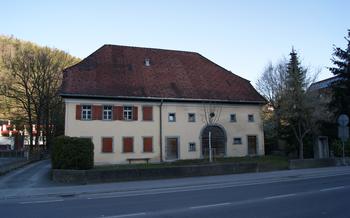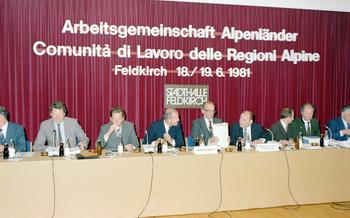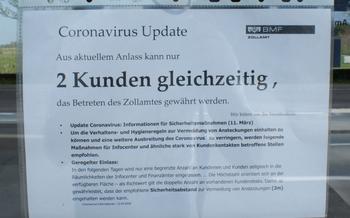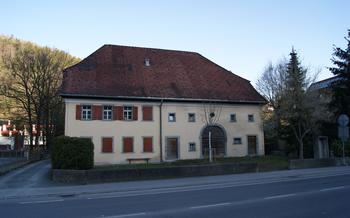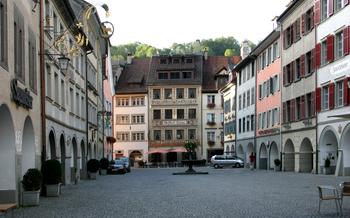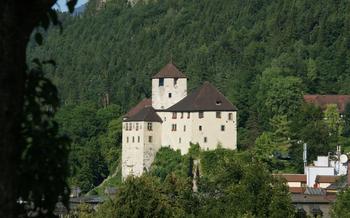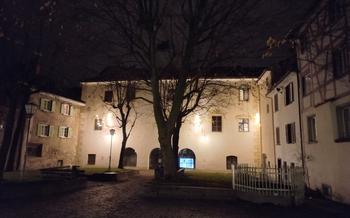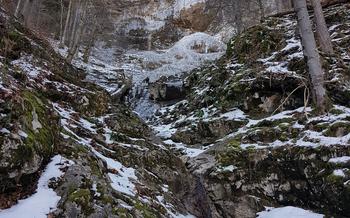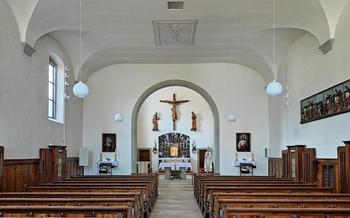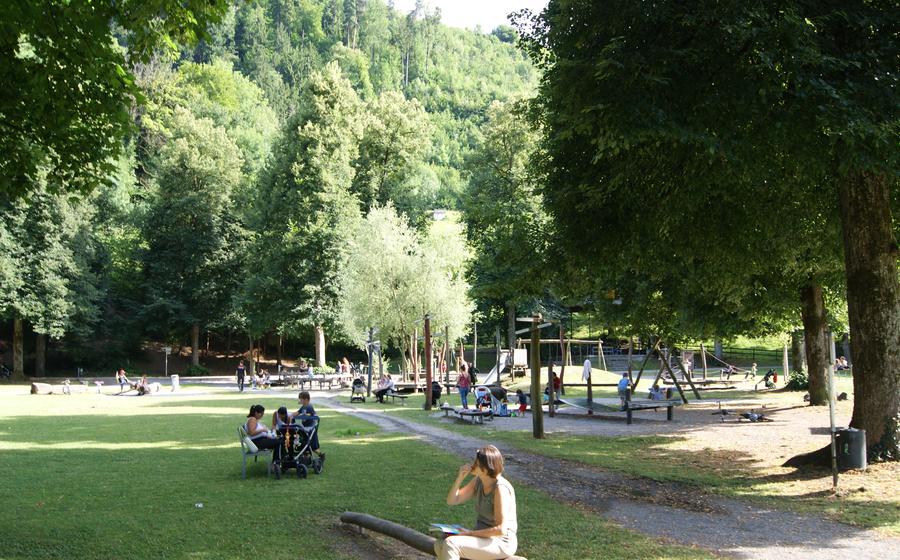
Liechtenstein National Museum in Vaduz
- Feldkirch: Gateway to Liechtenstein
- Vaduz, the Capital of Liechtenstein
- Liechtenstein National Museum: A Treasure Trove of History and Culture
- Permanent Exhibitions: A Journey Through Liechtenstein's Past
- Special Exhibitions: A Platform for Contemporary Art and Culture
- Interactive Displays: Engaging Visitors of All Ages
- Educational Programs: Nurturing a Love for Learning
- Research Center: A Hub for Scholarly Exploration
- Museum Shop: A Treasure Trove of Souvenirs and Gifts
- Accessibility and Facilities: Ensuring a Welcoming Experience for All
- Guided Tours: Unveiling Hidden Stories and Insights
- Location and Transportation: Conveniently Situated in Vaduz
- Hours of Operation and Admission Fees: Planning Your Visit
- Events and Activities: A Vibrant Cultural Calendar
Feldkirch: Gateway to Liechtenstein
Nestled in the heart of western Austria, the charming town of Feldkirch stands as a gateway to the tiny principality of Liechtenstein. Just a stone's throw away, Liechtenstein beckons with its rich cultural heritage, stunning Alpine scenery, and a unique blend of tradition and modernity. The Liechtenstein National Museum in Vaduz, the capital of Liechtenstein, emerges as a cultural beacon, inviting visitors to delve into the captivating history and vibrant contemporary art scene of this fascinating nation.
Feldkirch, with its strategic location on the banks of the Ill River and its proximity to the Swiss border, has long been a crossroads of cultures and a hub of trade. Its historic Altstadt (old town) boasts well-preserved medieval architecture, cobblestone streets, and charming squares, offering a glimpse into a bygone era. From Feldkirch, it's a short and scenic journey to Vaduz, the capital of Liechtenstein, where the Liechtenstein National Museum awaits, ready to unveil the treasures of this enchanting principality.
Vaduz, the Capital of Liechtenstein
Nestled amidst the majestic Alpine peaks, Vaduz, the capital of Liechtenstein, exudes a charm that is both serene and sophisticated. With a population of just over 5,000, Vaduz is one of the smallest capitals in Europe, yet it boasts a rich history and cultural heritage that belies its size. Situated in the heart of the Rhine Valley, Vaduz is a mere stone's throw from Feldkirch, making it an ideal day trip destination.
Visitors to Vaduz are immediately struck by its picturesque setting, surrounded by lush vineyards and rolling hills. The city's charm is further enhanced by the idyllic Rhine River, which meanders through the valley and adds to the tranquil ambiance. Vaduz is also home to several notable attractions, including the Vaduz Castle, the Parliament Building, and the Cathedral of St. Florin.
In addition to its historical and cultural significance, Vaduz is a vibrant hub of modern-day activity. The city boasts a lively shopping district, numerous restaurants and cafes, and a thriving arts and culture scene. Visitors can enjoy a leisurely stroll through the charming streets, soak in the stunning views from the castle terrace, or indulge in some retail therapy at the local boutiques.
Liechtenstein National Museum: A Treasure Trove of History and Culture
The Liechtenstein National Museum, founded in 1930, stands as a testament to the Principality's rich cultural heritage. Its mission is to preserve, study, and exhibit the diverse facets of Liechtenstein's history, art, and culture. The museum's collection encompasses a vast array of artifacts, artwork, and historical documents that narrate the story of Liechtenstein's unique identity and traditions.
Visitors to the museum are taken on a journey through time, beginning with the earliest traces of human settlement in the region. Ancient artifacts, such as stone tools and pottery, provide a glimpse into the lives of Liechtenstein's prehistoric inhabitants. As visitors progress through the museum, they encounter medieval manuscripts, coins, and weapons that shed light on the principality's role in the Holy Roman Empire.
The museum's collection also boasts a significant number of artworks, including paintings, sculptures, and tapestries that showcase the artistic talents of Liechtenstein's past and present. Visitors can admire works by local masters, such as Peter Kaiser and Alois Wachter, as well as international artists who have been inspired by the principality's natural beauty and rich history.
Permanent Exhibitions: A Journey Through Liechtenstein's Past
The Liechtenstein National Museum houses a diverse collection of permanent exhibitions that delve into the rich history and culture of the principality. Each exhibition is carefully curated to showcase a different aspect of Liechtenstein's heritage, from its ancient origins to its modern-day identity.
One of the highlights of the permanent collection is the Prehistoric and Early History exhibition, which takes visitors on a journey through Liechtenstein's earliest settlements. Here, you can marvel at ancient artifacts and tools that provide a glimpse into the lives of the region's first inhabitants.
Another must-see exhibition is the Middle Ages and Early Modern Period, which showcases the principality's transformation during the Middle Ages and Renaissance. This exhibition features medieval manuscripts, weaponry, and religious artifacts that offer insights into Liechtenstein's feudal past.
The Modern and Contemporary History exhibition explores Liechtenstein's more recent history, from its independence in the 19th century to its present-day status as a prosperous and modern nation. This exhibition features documents, photographs, and interactive displays that bring Liechtenstein's remarkable transformation to life.
Finally, the Art Collection exhibition showcases a diverse range of artworks from Liechtenstein and beyond. From medieval paintings to contemporary sculptures, this exhibition highlights the principality's rich artistic heritage and its contribution to the international art scene.
Through these permanent exhibitions, the Liechtenstein National Museum provides visitors with a comprehensive understanding of the country's past, present, and future, offering a journey through Liechtenstein's unique history and culture.
Special Exhibitions: A Platform for Contemporary Art and Culture
The Liechtenstein National Museum is not just a repository of historical artifacts; it is also a vibrant platform for contemporary art and culture. The museum hosts a diverse range of special exhibitions throughout the year, showcasing the works of both local and internationally renowned artists. These exhibitions explore a wide variety of themes, from modern art and design to photography and contemporary installations.
The special exhibitions at the Liechtenstein National Museum offer visitors a chance to engage with cutting-edge artistic practices and gain insights into the latest trends in contemporary art. The museum collaborates with artists, curators, and institutions from around the world to bring these exhibitions to life, creating a dynamic and ever-changing cultural landscape.
The temporary nature of these exhibitions adds to their allure, encouraging visitors to make return visits to the museum to catch the latest shows. The museum's website and social media channels provide up-to-date information on upcoming exhibitions, allowing visitors to plan their visits accordingly.
Whether you are an art enthusiast, a curious traveler, or simply looking for a stimulating cultural experience, the Liechtenstein National Museum's special exhibitions are sure to captivate and inspire.
Interactive Displays: Engaging Visitors of All Ages
The Liechtenstein National Museum's commitment to engaging visitors of all ages is evident in its use of interactive displays and multimedia presentations. These interactive elements bring history and culture to life, making them more accessible and enjoyable for younger audiences. Visitors can explore ancient artifacts, medieval manuscripts, and contemporary artworks through hands-on activities, touchscreens, and audio-visual displays.
One popular interactive exhibit is a virtual reality tour of Vaduz Castle. Visitors can don VR headsets and step back in time to experience the castle's grandeur during its heyday. Another highlight is the "History of Liechtenstein in 3D" exhibit, which uses 3D models and animations to tell the story of Liechtenstein's past. Younger visitors will particularly enjoy the "Kids' Corner," which features interactive games and activities designed to teach them about Liechtenstein's history and culture in a fun and engaging way.
With its interactive displays, the Liechtenstein National Museum provides a truly immersive and educational experience for visitors of all ages. These interactive elements make history and culture come alive, fostering a deeper understanding and appreciation of Liechtenstein's rich heritage.
Educational Programs: Nurturing a Love for Learning
The Liechtenstein National Museum recognizes the importance of education in fostering a lifelong love for learning and cultural appreciation. To this end, the museum offers a range of educational programs designed to engage visitors of all ages. These programs include interactive workshops, guided tours, and educational resources that make history and culture come alive for younger audiences and families.
The museum's educational workshops provide hands-on learning experiences that allow participants to explore Liechtenstein's heritage in a fun and engaging way. These workshops cover a variety of topics, such as traditional crafts, art techniques, and historical reenactments. Guided tours, led by knowledgeable and passionate educators, offer a deeper dive into the museum's collection and the stories behind the artifacts. The museum also develops educational resources, such as activity sheets, lesson plans, and online resources, to support teachers and families in teaching about Liechtenstein's history and culture.
Through these educational programs, the Liechtenstein National Museum aims to inspire a new generation of learners and cultivate a deep appreciation for Liechtenstein's rich cultural heritage. The museum's commitment to education ensures that visitors of all ages can engage with the museum's collection and develop a lifelong love for learning.
Research Center: A Hub for Scholarly Exploration
The Liechtenstein National Museum houses a renowned research center that serves as a hub for academic research and scholarly collaboration. Dedicated to advancing knowledge about Liechtenstein's history, art, and culture, the center brings together researchers, scholars, and experts from around the world. Through research projects, publications, and conferences, the center fosters a dynamic environment for exploring Liechtenstein's rich heritage and contributing to its cultural legacy.
The research center's resources and facilities are extensive, providing scholars with access to a wealth of primary sources, archival materials, and specialized databases. The center's team of experienced researchers offers guidance and support, facilitating in-depth studies and promoting interdisciplinary collaboration.
Whether you are a seasoned academic, an emerging researcher, or simply someone with a passion for learning, the Liechtenstein National Museum's research center welcomes you to delve into the fascinating world of Liechtenstein's past and present.
Museum Shop: A Treasure Trove of Souvenirs and Gifts
The Liechtenstein National Museum's gift shop is a treasure trove of unique souvenirs, books, and gifts that celebrate Liechtenstein's rich culture and history. Visitors can browse a wide variety of items, from traditional handicrafts to contemporary designs, all inspired by the country's unique heritage. The shop features a carefully curated selection of books on Liechtenstein's history, art, and culture, as well as a range of souvenirs that make perfect mementos of a visit to the museum.
Whether you're looking for a gift for a loved one or a special treat for yourself, the museum shop has something for everyone. From intricately carved wooden figurines to hand-painted ceramics, the shop showcases the talents of local artisans and promotes Liechtenstein's creative industries. Visitors can also find a range of postcards, magnets, keychains, and other small items that make great souvenirs to remember their trip.
The museum shop is committed to supporting local businesses and ensuring that visitors have access to high-quality, authentic products. By purchasing a souvenir from the museum shop, visitors not only take home a piece of Liechtenstein, but also contribute to the preservation and promotion of the country's cultural heritage.
Accessibility and Facilities: Ensuring a Welcoming Experience for All
The Liechtenstein National Museum is committed to providing a welcoming and inclusive environment for all visitors. The museum's facilities are designed to accommodate visitors with disabilities, ensuring that everyone can enjoy the museum's exhibitions and programs.
Wheelchair ramps and elevators are available throughout the museum, making it easy for visitors with mobility impairments to access all areas. Accessible restrooms are also available on each floor.
The museum staff is trained to assist visitors with disabilities and to provide any necessary accommodations. Visitors can request assistance with wheelchairs, sign language interpretation, or other accommodations by contacting the museum in advance.
The Liechtenstein National Museum is a place where everyone can learn about and appreciate Liechtenstein's rich history and culture. The museum's commitment to accessibility ensures that all visitors can have a positive and enjoyable experience.
Guided Tours: Unveiling Hidden Stories and Insights
To fully immerse yourself in the rich history and culture of Liechtenstein, consider joining a guided tour of the Liechtenstein National Museum. Led by knowledgeable and passionate guides, these tours bring the museum's collection to life with captivating storytelling and expert insights.
Choose from a variety of tour options to suit your interests, including general overviews that provide a comprehensive introduction to Liechtenstein's past, themed tours that delve into specific aspects of the country's history and culture, and customized tours tailored to the interests of your group.
During the tour, your guide will lead you through the museum's galleries, highlighting key artifacts, artwork, and historical documents. They will share stories and anecdotes about the people and events that shaped Liechtenstein's unique identity, bringing the past to life in a vivid and engaging way.
Whether you are a history buff, an art enthusiast, or simply curious about Liechtenstein's culture, a guided tour of the Liechtenstein National Museum is an unforgettable experience that will deepen your understanding and appreciation for this fascinating country.
Location and Transportation: Conveniently Situated in Vaduz
The Liechtenstein National Museum enjoys a prime location in the heart of Vaduz, the capital of Liechtenstein. Situated within walking distance of other attractions, such as Vaduz Castle and the Town Hall, the museum is easily accessible on foot. Visitors can also take advantage of the excellent public transportation options in Vaduz, with bus routes connecting the museum to various parts of the city. The Vaduz train station is just a short walk from the museum, providing convenient access for those arriving by rail. For those traveling by car, there are ample parking spaces available in the vicinity of the museum, ensuring a hassle-free visit.
Hours of Operation and Admission Fees: Planning Your Visit
The Liechtenstein National Museum welcomes visitors from all over the world with open arms. To ensure a smooth and enjoyable experience, it's essential to plan your visit by taking note of the museum's operating hours and admission fees. The museum's doors are open from Tuesday to Sunday, with specific hours varying depending on the season. During the peak tourist season, extended hours may apply, so it's advisable to check the museum's website or call ahead to confirm.
Admission fees are structured to provide access to all the museum's exhibitions and galleries. Standard tickets are available, offering general admission to adults, students, and seniors. Children under the age of 16 are admitted free of charge, making the museum an excellent destination for families. Additionally, group discounts are available for organized tours and educational groups, providing a cost-effective option for larger parties.
To avoid queues and ensure a seamless entry, the museum recommends purchasing tickets online in advance. This convenient option allows visitors to skip the line and head straight to the museum's treasures. Online ticket sales are available on the museum's website, where you can select your preferred date and time of visit.
By planning your visit with the museum's hours of operation and admission fees in mind, you can optimize your time and make the most of your cultural journey through Liechtenstein's rich heritage and captivating stories.
Events and Activities: A Vibrant Cultural Calendar
The Liechtenstein National Museum is not just a repository of history and culture but also a vibrant hub for community engagement and cultural exchange. The museum hosts a diverse range of events and activities throughout the year, catering to visitors of all ages and interests.
From thought-provoking lectures and engaging workshops to intimate concerts and family-friendly programs, the museum's calendar is always buzzing with activity. These events provide a platform for dialogue, creativity, and learning, fostering a sense of community and cultural appreciation among visitors.
Whether you're interested in delving deeper into Liechtenstein's history, exploring contemporary art, or simply enjoying a creative afternoon with your family, the Liechtenstein National Museum has something to offer. Check their website or social media channels to stay updated on upcoming events and activities and to plan your visit accordingly.
